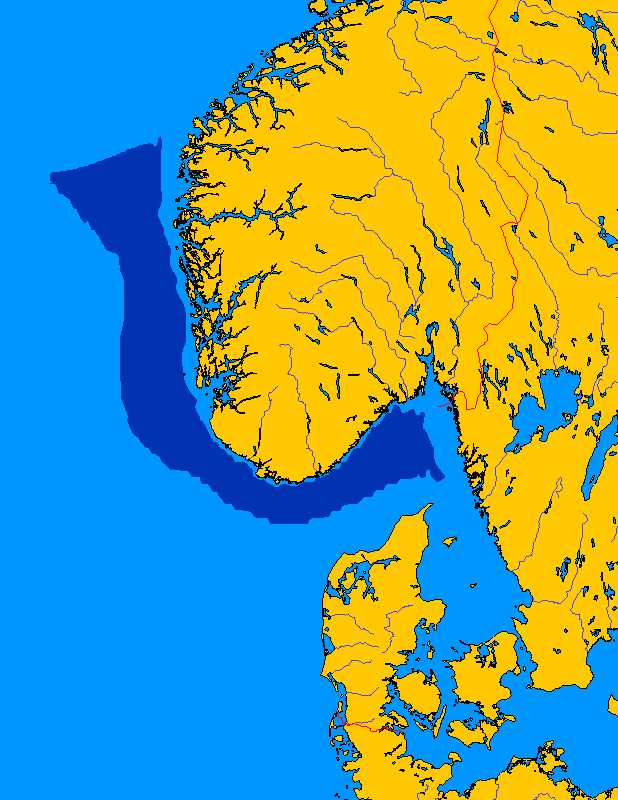Why is Norway one of the richest countries in the world?

Why is Norway one of the richest countries in the world?

This year we’re having an anniversary in Norway. 2021 marks 50 years since we started full scale extraction of olje (oil) from the sea bed of the North Sea. That was in 1971, and the name of the very first oil field was Ekofisk.
Norway’s wealth
Norway has caught the fame for being one of the richest countries in the world. In terms of GDP per capita we ranked number 4 in 2020 (see the list here). When it comes to having the largest Sovereign Wealth Fund in the world we rank number 1! This fund amounted to 1.275 Billion USD in 2020. That’s a lot of money for a country of 5,3 million inhabitants.
My aim with this post is not to brag about these numbers. But I find it interesting looking closer at how we got where we are today.
There are many countries with large oil exports, but little or no money saved up. So how come Norway has been able to save up such a large amount? And how come we found all this oil in the first place?
Now many would say that the number one reason for Norway’s wealth is the Oil. But is it really just a matter of having a lot of a valuable resource?

History of the Norwegian oil adventure
In 2018 Norway exported 1,2 million barrels of oil per day, making it the 14th biggest exporter of oil in the world. And for instance Angola exported 1,4 million barrels, a lot of oil, but they still don’ have the sovereign wealth that Norway has. It seems there is something else needed than natural resources to create a wealthy country. And what can that be? Perhaps our politicians have done something smart, or perhaps its just luck? Let’s find out.
To go back in time, In 1959 the Netherlands found a huge natural gas field in the area of Groningen. This sparked interest for the major oil companies such as Shell, Esso and Chevron to start looking for oil and gas in the North Sea as well.
Back At that time the borders at sea between Denmark, Great Britain and Norway were not decided upon. But some years later in 1965, they did agree on how they would divide the North Sea, following the principle of equidistance, meaning that they set the borders right in the middle between the countries. However, this could have turned out differently. Norway’s border could might as well have ended up by what is known as the Norwegian channel. This is an elongated trench in the sea floor off the southern coast of Norway. Meaning that Denmark would have had a much greater part of the North sea. Denmark at that time was also negotiation with Germany about their sea borders, and had insisted on using the principle of equidistance. So therefor it was fair that they took the same approach towards Norway.



Copyright © 2005 Bra; modified by Kjetil_r, CC BY-SA 3.0 <http://creativecommons.org/licenses/by-sa/3.0/>, via Wikimedia Commons
 PER HÆKKERUP – BT.DK FOTO BJARNE LUTHCKE
PER HÆKKERUP – BT.DK FOTO BJARNE LUTHCKEThe myth also says that the Danish foreign minister Per Hækkerup had been drinking whiskey during some of the negotiation meetings with the Norwegians, and might have made him a bit loose handed… but, this is just a myth that Norwegians like to joke about 🙂
Now this is where some luck comes into the picture. During Christmas 1969 the company Philips Petroleum found a huge oil and gas reserve beneath the seabed in the North Sea. This reserve would be known as Ekofisk. And this was Just inside Norway’s newly set border. Norway had lucked out! Discovering what was the biggest oil field found at sea.
Norway at that time did not have their own industry and technology to get the oil up from the sea bed. And therefor relied on foreign companies to do the job of searching and drilling for oil… So When foreign companies were doing the actual work of finding and extracting the oil, how could Norway prevent all the oil revenue from going out of the country, and instead making sure the oil income would be to the benefit of Norwegians themselves?
When Norway found the Oil
A very clever thing the politicians did early on was to establish the 10 Oil commandments . Which were 10 principles outlining how Norway were to organize the oil production. Making clear that they had to establish their own industry, develop their own technology to get the oil up, and also to make the Norwegian state a key player in managing the oil resources.

The ten Oil Commandments
So since the goal was to produce the oil themselves, gradually the foreign companies were replaced by Norwegian companies like Statoil and Norsk Hydro, and as a result of this Norway was able to keep much of the oil revenue for themselves. Today, these are large Global corporations, looking for oil and gas all over the world, thanks to having started developing their own technology for finding and extracting oil back in the 70s and onward.

NORWEGIAN GOVERNMENT 1970 – SOURCE: ARBEIDERBEVEGELENS ARKIV
Now as I mentioned earlier, having a lot of oil doesn’t necessarily make a country rich. So how come Norway has been able to turn all this profit from the oil industry?
Norway has a strong democratic tradition, and has been fortunate to have politicians with a lot of integrity who has put the interest of the country over themselves. So instead of having corrupt politicians thinking about their own interests and letting private enterprises dictate the rules of business, Norway has been able to keep a steady course, and stick to the 10 oil commandments, and therefor made sure that the oil income was for the Norwegian people, and not for foreign interests. And I can add that Norway has a 51 per cent tax on petroleum-related income, on top of the 27 per cent income tax. That amounts to a whopping 78 per cent total tax rate. All going into the state treasury.
Up through the 70s and 80s most of the oil income went to investing into the oil industry. To develop new technology, infrastructure and to explore new parts of the seabed. As Norway had to do less of these investments, and as the oil revenue grew, they were starting to have more money than could be spent.
The Norwegian oil fund
A turning point for the Norwegian economy was the Norwegian Oil fund , today known as the Government Pension Fund Global, which was established in 1990. The establishing of this fund was inspired by the already existing Heritage Savings and Trust Fund) in Alberta, Canada. The aim of this fund is to serve as a financial reserve and as a long-term saving plan for future generations.

Source: https://www.nbim.no/en/
Norway made it’s first deposit into the Government pension fund in 1996. And in 1998 it had a market value of about 23 billion dollars. And by 2020 it had grown into a whopping 1,275 billion dollars, making it one of the largest funds in the world.
The money in this fund have been earned by investing in equities, fixed income and real estate. Norway, through this fund, owns 1,5% percent of all shares in the world’s listed companies. And remember, we are only a country of 5,3 million people.
How did Norway save so much of its oil wealth?
In Norway there is a broad political consensus on how to manage this fund. The Norwegian government has decided on a budgetary rule called handlingsregelen. This rule states that every year only about 3 per cent of the return from the fund is allocated to the national budget. Meaning that only a small part of the return of the fund is spent, and not the actual capital of the fund, which goes to investing globally.
In many countries this would not work well, since new governments and politicians seeking to be reelected, would possibly promise to spend more than handlingsregelen to give more wealth to the people, which in the long term would decrease the value of the fund, and take away its purpose. But in Norway there is luckily a broad agreement among politicians to stay on course and stick to the plan. And for instance, In 2017 the budgetary rule was actually decreased from 4% to 3%.
To sum up the reasons why the Oil has transformed Norway into one of the richest countries in the world.
-
Heavy state involvement
-
Politicians with integrity
-
Saving and investing most of the money
-
Not breaking the rule of the handlingsregelen, the budgetary rule
I hope you found this interesting! Also check out the YouTube-video: How Oil Made Norway into one of the richest countries in the world.
You might also like: I talk to Rick Steves about Norway
Take care,
Your friend in Norway,
Pål
DISCLAIMER: Products on this page may contain affiliate links, and I might make a small sum per purchase. For you this does not affect the product price, but supports me and my work, and makes me able to continue sharing my passion for Norway with you. Read the Disclaimer policy. Thank you, tusen takk!
4 Comments
Leave a Comment
Join the Newsletter

Get my digital recipe book with seven traditional and tasty Norwegian delights!
Join on Patreon

Become a part of the virtual viking Norway With Pål family, support, and get exclusive content and perks!
Looking for something?
Donate on Paypal

Your support helps me to continue sharing my passion for Norway with you.
Tusen takk! Thank you!



Would love to be in Norway
I hope you’ll make it over here some day!
Just a small point regarding this:
“This fund amounted to 1.275 Billion USD in 2020.”
Unless you are using the historical UK definition of Billion (1×10^12) you are understating its value by a factor of 1000. It should be ‘Trillion’.
https://researchbriefings.files.parliament.uk/documents/SN04440/SN04440.pdf
I see.. In Norwegian it is “Milliard” which is 1000 millions. I believed the correct (and relatable) translation was Billion. Isn’t a Billion 1000 millions?